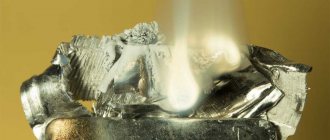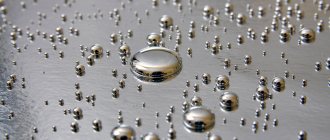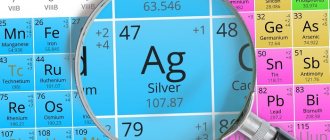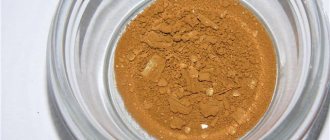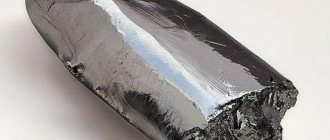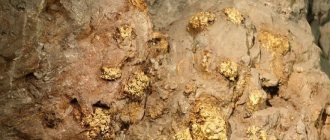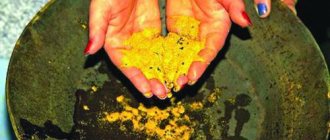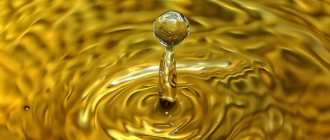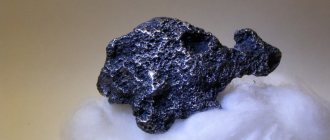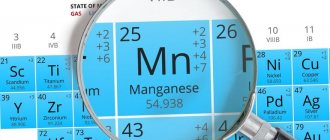BARIUM
is a chemical element of the 2nd group of the periodic table, atomic number 56, relative atomic mass 137.33. Located in the sixth period between cesium and lanthanum. Natural barium consists of seven stable isotopes with mass numbers 130(0.101%), 132(0.097%), 134(2.42%), 135(6.59%), 136(7.81%), 137(11. 32%) and 138 (71.66%). Barium in most chemical compounds exhibits a maximum oxidation state of +2, but can also have a zero oxidation state. In nature, barium occurs only in the divalent state.
Being in nature
The barium content in the earth's crust is 0.05% by weight; in sea water the average barium content is 0.02 mg/l. Barium is active; it belongs to the subgroup of alkaline earth metals and is bound quite tightly in minerals. Main minerals: barite (BaSO4) and witherite (BaCO3).
Rare barium minerals: celsian or barium feldspar (barium aluminosilicate), hyalophane (mixed barium and potassium aluminosilicate), nitrobarite (barium nitrate), etc.
Types of deposits
Based on mineral associations, barite ores are divided into monomineral and complex. Complex complexes are divided into barite-sulfide (contain sulfides of lead, zinc, sometimes copper and iron pyrite, less often Sn, Ni, Au, Ag), barite-calcite (contain up to 75% calcite), iron-barite (contain magnetite, hematite, and in the upper zones goethite and hydrogoethite) and barite-fluorite (in addition to barite and fluorite, they usually contain quartz and calcite, and zinc, lead, copper and mercury sulfides are sometimes present in the form of small impurities).
From a practical point of view, hydrothermal vein monomineral, barite-sulfide and barite-fluorite deposits are of greatest interest. Some metasomatic strata deposits and eluvial placers are also of industrial importance. Sedimentary deposits, which are typical chemical sediments of water basins, are rare and do not play a significant role.
As a rule, barite ores contain other useful components (fluorite, galena, sphalerite, copper, gold in industrial concentrations), so they are used in combination.
What is
Barium is a chemical element occupying cell 56 of the periodic table:
- Initially, it is a soft, plastic substance with a viscous structure and a silvery color.
- Refers to alkaline earth metals.
- Like other elements in this segment, it is endowed with increased chemical activity.
- The composition is a conglomerate of seven stable isotopes. Two thirds (72%) are Ba138. Radioactive isotopes have been synthesized.
The most popular artificial isotope is Ba140. This product of uranium-thorium-plutonium decay serves as a marker of radioactivity.
International designation – Ba (Barium).
Receipt
The main raw material for barium production is barite concentrate (80-95% BaSO4), which, in turn, is obtained by barite flotation. Barium sulfate is subsequently reduced with coke or natural gas:
BaSO4 + 4C → BaS + 4CO BaSO4 + 2CH4 → BaS + 2C + 4H2O
Next, the sulfide, when heated, is hydrolyzed to barium hydroxide Ba(OH)2 or, under the influence of CO2, is converted into insoluble barium carbonate BaCO3, which is then converted into barium oxide BaO (calcination at 800 °C for Ba(OH)2 and over 1000 °C for BaCO3 ):
BaS + 2H2O → Ba(OH)2 + H2S↑ BaS + H2O + CO2 → BaCO3 + H2S↑ BaCO3 → BaO + CO2
Barium metal is obtained by electrolysis of an anhydrous melt of barium chloride:
BaCl2 → Ba + Cl2
How it was opened
The history of the discovery of the substance is associated with the names of European scientists:
- The first product was the oxide of the substance. It was obtained by Swedish chemists Johan Hahn and Karl Scheele.
- 34 years later (1808), their English colleague Humphry Davy “extracted” barium amalgam by using electrolysis of moistened hydroxide on a mercury cathode, then heating the composition to the temperature of mercury evaporation. The remainder was the metal barium.
The name of the metal reflects the "massiveness" of its oxide: the ancient Greek βαρύς means " heavy ". It is no coincidence that Karl Scheele dubbed his brainchild “heavy earth.” Although barium is not included in the group of heavy metals.
Chemical properties
Barium is an alkaline earth metal. In air, barium quickly oxidizes, forming a mixture of barium oxide BaO and barium nitride Ba3N2, and with slight heating it ignites. Reacts vigorously with water, forming barium hydroxide Ba(OH)2:
Ba + 2H2O → Ba(OH)2 + H2↑
Actively interacts with dilute acids. Many barium salts are insoluble or slightly soluble in water: barium sulfate BaSO4, barium sulfite BaSO3, barium carbonate BaCO3, barium phosphate Ba3(PO4)2. Barium sulfide BaS, unlike calcium sulfide CaS, is highly soluble in water. Soluble barium salts make it possible to determine the presence of sulfuric acid and its soluble salts in a solution by the precipitation of a white precipitate of barium sulfate, insoluble in water and acids.
Reacts easily with halogens to form halides.
When heated with hydrogen, it forms barium hydride BaH2, which, in turn, with lithium hydride LiH gives the complex Li[BaH3].
Reacts when heated with ammonia:
6Ba + 2NH3 → 3BaH2 + Ba3N2
When heated, barium nitride Ba3N2 reacts with CO, forming cyanide:
Ba3N2 + 2CO → Ba(CN)2 + 2BaO
With liquid ammonia it gives a dark blue solution, from which ammonia [Ba(NH3)6] can be isolated, which has a golden luster and easily decomposes with the elimination of NH3. In the presence of a platinum catalyst, ammonia decomposes to form barium amide:
[Ba(NH3)6] → Ba(NH2)2 + 4NH3 + H2
Barium carbide BaC2 can be obtained by heating BaO with coal in an arc furnace.
With phosphorus it forms phosphide Ba3P2.
Barium reduces the oxides, halides and sulfides of many metals to the corresponding metal.
Warning
The effect of the substance on humans can be dangerous.
Barium and its soluble salts are toxic:
- Poisoning occurs when the safe concentration is exceeded.
- Soluble salts are especially dangerous. Once in the gastrointestinal tract, they are “released”. Then they cause cardiac paralysis and death within a few hours.
- Severe poisoning (ingestion of 0.19-0.49 g of soluble metal salts) results in death within 24 hours. 0.79-0.89 g causes instant death.
- Symptoms of barium intoxication include disturbances in speech, vision, and gait due to muscle paralysis. Plus dizziness, shortness of breath, tinnitus.
Metal leaves a chemical burn on the skin and mucous membranes.
According to Russian standards, barium belongs to hazard class 2. A cubic decimeter of water (volume 10x10x10 cm) cannot contain more than 0.7 mg of the substance.
Qualitative and quantitative analysis
Qualitatively in solutions, barium is detected by the precipitation of barium sulfate BaSO4, distinguishable from the corresponding calcium sulfates and strontium sulfates by their extremely low solubility in inorganic acids.
Sodium rhodizonate releases a characteristic red-brown precipitate of barium rhodizonate from neutral barium salts. The reaction is very sensitive and specific, allowing the determination of 1 part of barium ions per 210,000 parts by mass of solution.
Barium compounds color the flame yellow-green (wavelength 455 and 493 nm).
Barium is quantified gravimetrically in the form of BaSO4 or BaCrO4.
